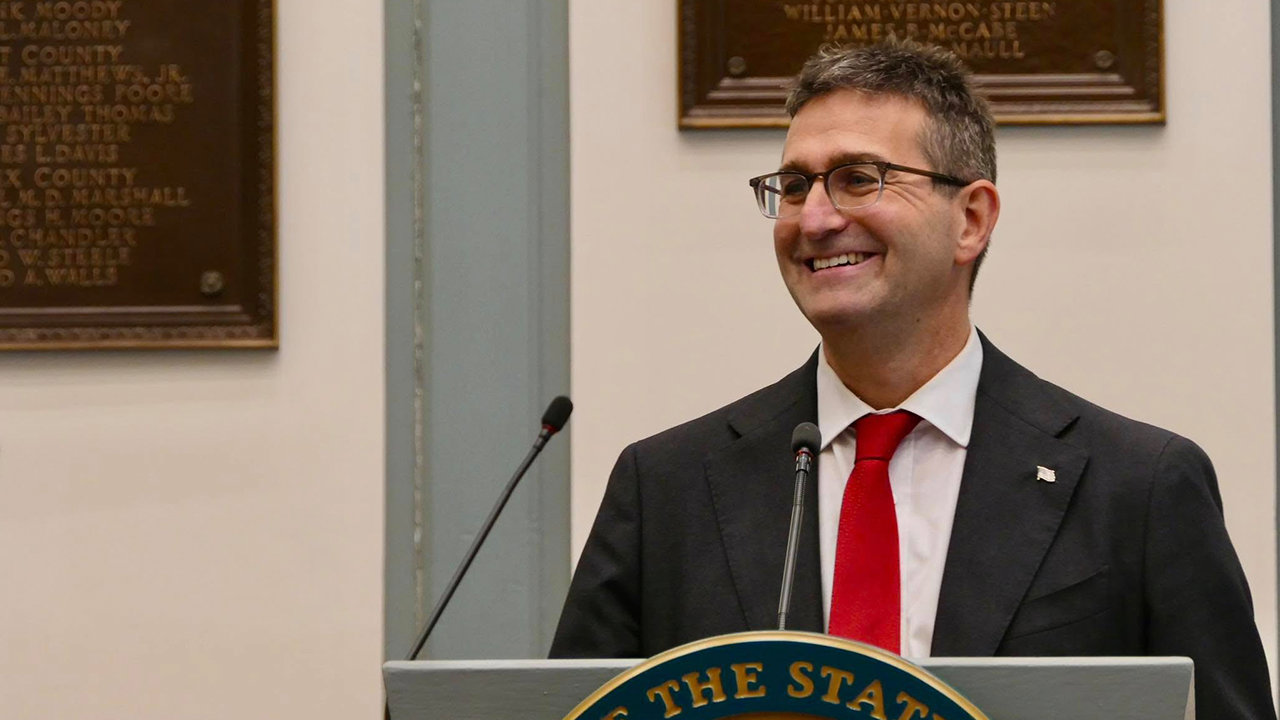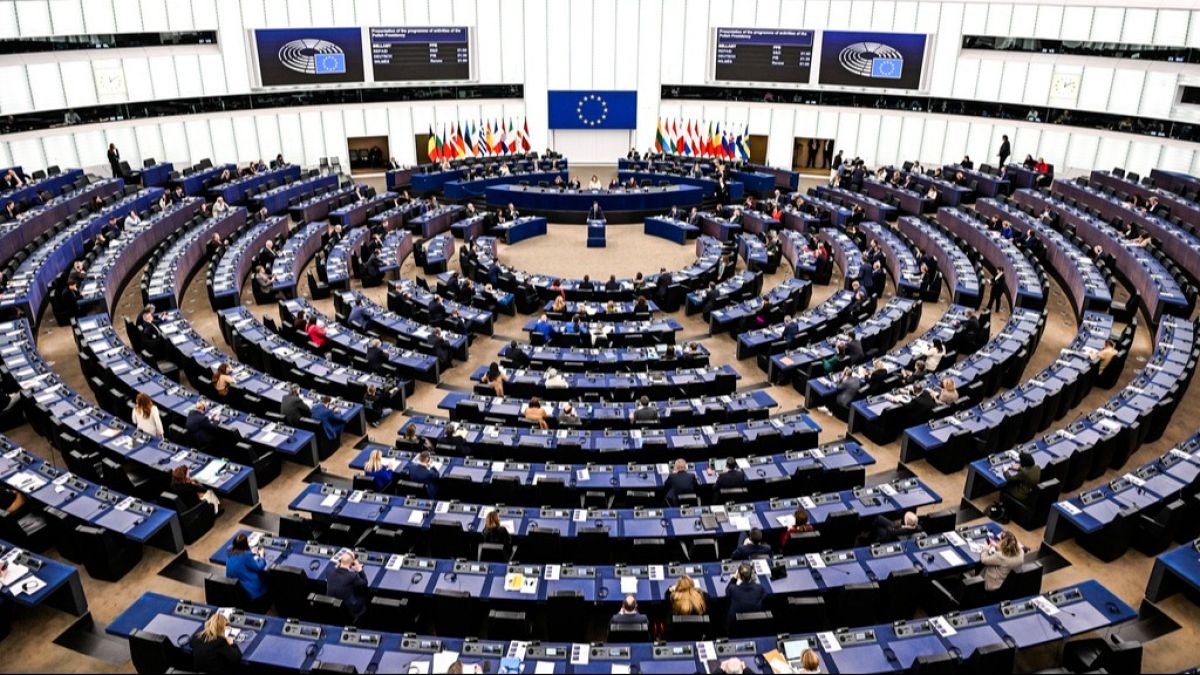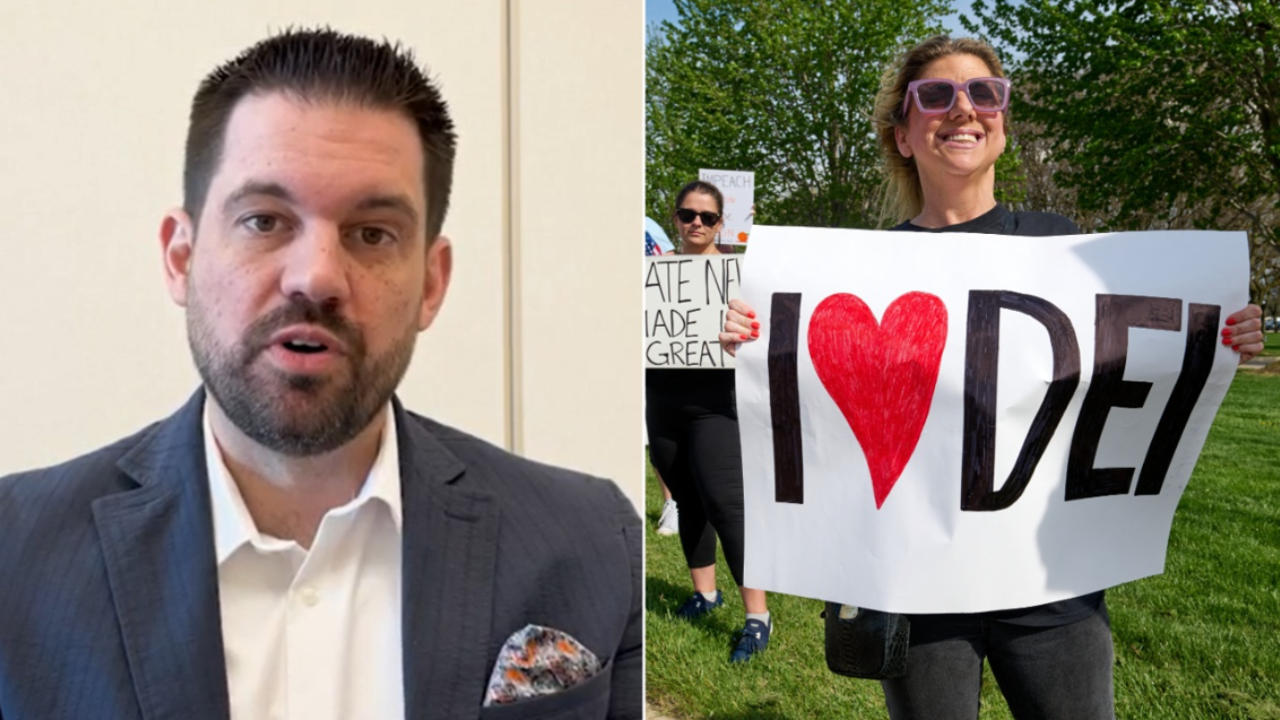Austin, TX
FOX 7 Focus: Breaking down Texas Legislature’s property tax cut deal
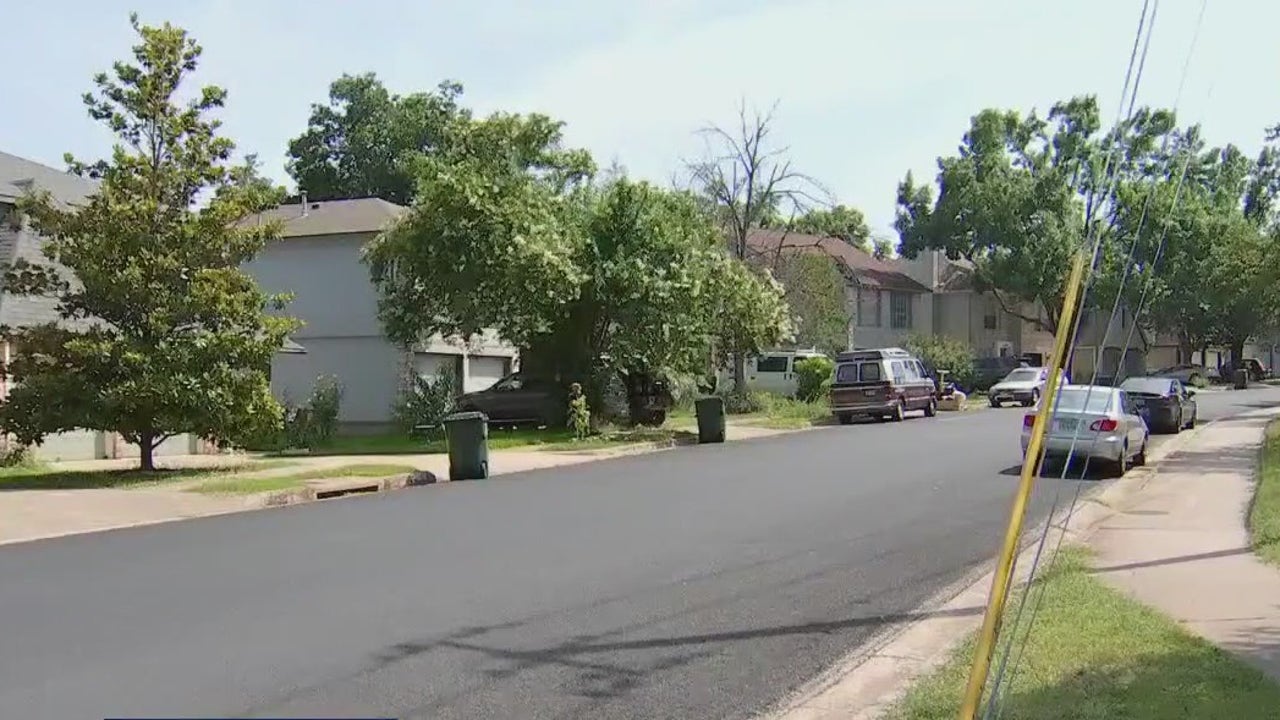
FOX 7 Focus: Breaking down property tax deal
In this week’s FOX 7 Focus, John Krinjak sits down with Harvey Kronberg, publisher of TheQuorumReport.com, to break down the recent deal in the Texas House and Senate on property tax reflief.
AUSTIN, Texas – The Texas House and Senate recently reached a deal on property tax relief following a months-long impasse and two special sessions.
The bill is now headed to Gov. Greg Abbott’s desk.
In this FOX 7 Focus, Harvey Kronberg, publisher of The Quorum Report, sat down with FOX 7 Austin’s John Krinjak to break down what’s in the compromise legislation, what it means politically and what it means for Texans.
JOHN KRINJAK: As someone who watches Texas politics, what was your reaction when you heard about this deal between the House and the Senate on property tax?
HARVEY KRONBERG: Totally unsurprised. We knew there was going to be a deal. We knew most of the elements that were going to be in the deal. And frankly, I would make the argument that most of the problems were not in the proposals. They were in the personalities. The governor had not participated until the very end. You have a speaker and a lieutenant governor who don’t like, I mean, frankly don’t like each other. And you had gotten to the point where the lieutenant governor was going on talk radio and on television, trash talking him on all kinds of conservative media. More of the delay was attributed to personality than to legitimate, substantive issues.
JOHN KRINJAK: When you look at the substance of what’s actually in here, $12 billion for reducing the school property tax rate, a $100,000 homestead exemption, as well as this 20% circuit breaker as it’s all coming. First of all, what is all that and how much it accomplishes?
HARVEY KRONBERG: Well, the $12 billion in paying down property tax reduction is a one time, well, it’s one time, they’d have to reauthorize it again next cycle. So they’ve raised the bar as to what the baseline is going forward. And we just have to hope the economy is sufficient to support that. But if by putting more money into schools, they put less pressure on schools to have to raise their property taxes, that’s called compression. The thing that is going to be most durable for most homeowners is, and which is not dependent on the economy, is raising the homestead exemption from $40,000 to $100,000. And for most middle class folks, they will feel that that’ll be about on average, about $400 bucks or something like that. And it’s not going to be contingent on future budgets and the 20% cap on increasing nonresidential property in places like Austin, where you saw nine homesteads double in the last three years, that that can be pretty consequential, but nobody knows that. To my knowledge, nobody knows what that’s going to cost yet. So it lets everybody get out of town claiming that they have done something about property taxes.
JOHN KRINJAK: What is the impact for the average Texas homeowner or are they going to feel this in short order?
HARVEY KRONBERG: Somebody with a half million dollar home is only going to be, that is not over 65, is going to watch their taxable value of their house dropped from $500,000 to $400,000. That means their property tax reduction is going to be meaningful. It’s not going to reach renters and it’s not going to affect rental properties per se. But for the average Texan, this may be the first property tax reduction that most people will actually feel.
JOHN KRINJAK: What do you feel like the political optics are here? Do any of the big three come away looking good at it?
HARVEY KRONBERG: Well, I don’t know how much the public was paying attention to this, but from essentially an insider’s perspective, no, nobody comes away looking graceful. It represents a pretty large dysfunction. I’ve been here since Bill Clements was governor. Bill Clements back in 1989 was personally engaged in negotiations. Ann Richards was personally engaged. George W Bush was definitely engaged. Rick Perry was engaged. This governor was not engaged. And he left it to the devices of two people who don’t like each other. It was Sam Rayburn, former speaker of both the Texas House and speaker in Congress, who said most people think it’s Democrats and Republicans are the enemy, that it’s the House versus the Senate.

Austin, TX
Texas House lawmakers OK bills that would require judges to deny bail for certain felonies

A proposal that would require judges to deny bail for undocumented immigrants charged with certain felonies did not receive the two-thirds majority support needed May 19, although House members can take an additional vote later if more support is garnered.
“I’ve never voted on any legislation more important than what we’re getting ready to consider, because it holds the very key to the life or death of some very wonderful people, some very innocent people,” Rep. John Smithee, R-Amarillo, who sponsored the bills in the House, said May 19.
What you need to know
On the House floor May 19, proponents of the measures spoke of a “broken” bail system under which violent offenders are released from jail and continue committing crimes.
“As a sheriff, I had to answer these questions on a regular basis as to how a person got out and was able to commit another crime, another felony,” former Jackson County Sheriff and freshman Rep. AJ Louderback, R-Victoria, said May 19. “I had to tell them [it was the] bail system.”
Opponents of the proposals, including the American Civil Liberties Union of Texas and the Texas Civil Rights Project, have expressed concerns that tightening restrictions on bail would strip defendants of due process protections and limit judges’ authority to make case-by-case decisions.
House lawmakers adopted Senate Joint Resolution 5, which proposes amending the Texas Constitution to require judges to deny bail for certain violent offenses. If state senators approve the House’s amendments to SJR 5, it will appear on Texas voters’ ballots in November.
The House gave initial approval to Senate Bill 9, which would expand a list of offenses for which defendants could not be released on low-cost bonds; and SB 40, which would prohibit local governments from giving public money to nonprofits that help cover bail costs. House members must vote on these bills one more time before they can be sent back to the Senate.
The bail package is expected to be signed by Gov. Greg Abbott, who has deemed tightening bail laws an emergency priority for three straight sessions. In a social media post following the May 19 votes, Abbott called the bipartisan support of his priorities “incredible” and said Texas was “one step closer to saving lives.”
SJR 1, a proposed constitutional amendment that would require judges to deny bail for undocumented migrants accused of certain felonies, did not receive the 100 votes required to adopt the measure and place it on the ballot. House members can bring the proposal up for an additional vote as soon as May 20.
Zooming in
Under SJR 5, judges would be required to deny bail to defendants accused of certain violent offenses, including murder, human trafficking and aggravated sexual assault. The state would be required to demonstrate that a defendant is a flight risk or threat to public safety before bail would be denied. Defendants would also have the right to legal counsel in bail hearings, according to the legislation.
The measure approved by the House would go further than the Senate’s original proposal, which would give judges more discretion to deny bail.
“It may not be perfect, but it’s the best we can do to fix a system that’s been broken for a long time,” Smithee said on the House floor. “This bill has [Sen. Joan] Huffman’s name on it, … but it’s not her bill or my bill, or even the governor’s bill. This bill truly belongs to the families of the victims, and the victims themselves, who have suffered these needless tragedies.”
“We wouldn’t be here if there weren’t real life examples of people being released who plainly should not have been,” Rep. Joe Moody, D-El Paso, said before the vote on SJR 5.
Moody added that lawmakers should also adjust the state’s bail system to help people who commit lower-level crimes and cannot afford bail.
“That’s how the bail reform conversation started a decade ago,” Moody said May 19. “For every improperly released defendant who commits a serious crime, there’s 100 low-level offenders held when they shouldn’t be, whose lives are upended. We need to do both.”
House members adopted SJR 5 with a 133-8 vote May 19.
More details
SJR 1 proposes amending the state constitution to automatically deny bail to unauthorized immigrants charged with certain felonies. Just two House Democrats were in favor of the proposal on May 19, causing it to fall short of the two-thirds majority threshold needed for constitutional amendments.
The version proposed in the House includes a tighter definition of “illegal alien” than what the Senate approved, which Smithee said would prevent lawful permanent residents and people with other protected statuses from being swept up under the bill. Democrats asked that people with Deferred Action for Childhood Arrivals status and people who came to the U.S. to flee violence also be excluded, although their amendments were rejected.
Smithee said he would work with Democrats to expand the protected immigration classes referenced in the bill before the House takes another vote on SJR 1.
Rep. Erin Gámez, D-Brownsville, who voted against SJR 1, said local judges and magistrates who set bail do not have the resources or training to handle immigration decisions.
“There are immigration judges who spend hours making this careful determination—entire courts that have been carved out alone to make these very carefully planned-out, judicious determinations, and it’s your opinion that a magistrate can simply do it,” Gámez said May 19.
Moody said he voted for SJR 1 because it would limit the bill to about 20 felonies related to elections, drug and violent crimes. Under the Senate’s version of the legislation, Moody said, unauthorized migrants would be denied bail for any felony offense.
“If a felony sounds serious, you should know that there are about 2,500 felonies to be charged with in Texas,” Moody said on the House floor.
Moody added that he was concerned about the idea that all undocumented migrants are violent criminals.
“From Twitter to town halls, the language around immigration is toxic,” he said. It’s dehumanizing, and in some cases, it’s nakedly racist. We talk about policy that’s supposed to save lives, but this type of scapegoating led to a mass murder in my hometown just a few years ago, and since then, that rhetoric has gotten worse, not better.”
Also of note
SB 9 would expand on a 2021 state law that limited who is eligible for low-cost personal bonds. Under the bill, defendants would have to meet a higher bond if accused of unlawful possession of a firearm; violation of a family violence protective order; terroristic threat; or murder as a result of manufacturing or delivering fentanyl.
Rep. Mitch Little, R-Lewisville, said judges would be required to document their reasoning when determining whether to hold a defendant in jail or release them on bond. The state would also be able to appeal bail decisions. If a case is appealed, the defendant would remain behind bars for up to 20 days during litigation.
“From time to time, we’re going to see magistrates or district judges make mistakes or make bad decisions about bail concerning violent offenses,” Little said May 19. “[SB 9] is going to make the people in our districts back home safer, and it’s going to protect us from ongoing conduct by people who are repeat violent offenders.”
House members initially approved SB 9 with a 122-20 vote May 19. The proposal must receive one more vote before it can head back to the Senate.
In a statement following the vote on SB 9, the ACLU of Texas said the legislation would unfairly punish poor Texans.
“This bill violates basic principles of due process, keeps poor people in jail for being poor, and hands prosecutors a veto over judicial decisions,” said Nick Hudson, a senior policy and advocacy strategist for the ACLU of Texas. “Texas families deserve reforms rooted in evidence, fairness and public safety instead of fear.”
One more thing
SB 40 would prohibit the use of public funds to pay nonprofit organizations that cover bail costs. The legislation stemmed from allegations that Harris County has given nearly $2.1 million since 2022 to the Bail Project, an organization that helps low-income defendants meet bail.
In February, a spokesperson for the Bail Project told Community Impact that the organization does not accept public money. Funds received from Harris County were reimbursements, the spokesperson said, because state law allows refunds if a defendant appears at all required court dates.
“There was a dispute as to whether this was happening in Harris County. … We’re not here to adjudicate that today,” Smithee said on the House floor May 19. “We’re just saying that it shouldn’t happen in the future. This is not a good use of taxpayer money.”
SB 40 was initially passed with a 132-13 vote and will need a final vote before it returns to the Senate.
Austin, TX
Best Fun Events In Austin This Weekend Of May 23, 2025

Best Fun Events in Austin this Weekend of May 23, 2025
Our top picks for the Best Fun Events in Austin this Weekend of May 23
Check out the full list below!
Editor’s Note: Our staff works hard to bring you the latest information. However, all information mentioned in this article is subject to change. As always, please confirm before heading out.
Free Things To Do in Austin this Weekend
Two-Step Night
Lace up your dancing boots and get ready to tap, tap, tap along the dance floor in this two-steppin’ fun night! The night will feature interactive two-step lessons for all levels set to a lively Western playlist.
And for those who want to keep dancing into the night, this will be followed by a live band who’ll play until the end of the event.
When: Friday, May 23, 2025 | 7 pm – 1 pm
Where: Moody Amphitheater, 1401 Trinity St, Austin, TX 78701
How Much: Free
Treaty Oak Distilling Memorial Day Block Party
Kick off summer while celebrating Memorial day with friends and family in this fun-coded block party! Get stuffed with amazing tacos from gourmet taco stations, say cheers to celebrated heroes with craft cocktails, and get to shop from local vendors at the farmers market.
When: Saturday, May 24, 2025 | 12 pm – 4 pm
Where: Treaty Oak Distilling, 16604 Fitzhugh Rd, Dripping Springs, TX 78620
How Much: Free
Memorial Day Community Bike Ride
Pedal your way into summer fun with Bastrop’s Memorial Day Community Bike Ride! This event is divided into two rides: one is a family-friendly ride that kids can join in the park and the other is an adults ride that will start from the park and go through Riverside Grove.
When: Saturday, May 24, 2025 | 9 am
Where: Bob Bryant Park, 600 Charles Blvd, Bastrop, TX 78602
How Much: Free
Ice Cream Social and Summer Kick-Off
Cool the summer heat with some ice-cold and refreshing ice cream treats at Vista Brewing this weekend. Beanz Creamz are bringing the locally made, nostalgic treats to the ranch for guests to enjoy
While the kids can enjoy all kinds of push pops and freezy pops flavors, adults can go for the limited edition Ice Cream Beer Float.
When: Saturday, May 24, 2025 | 1 pm – 5 pm
Where: Vista Brewing, 13551 Ranch to Market Rd 150, Driftwood, TX 78619
How Much: Free
Things To Do in Austin this Weekend – Friday Events
Broadway in Austin: Moulin Rouge the Musical


Image credit: Austin.broadway
Prepare to be swept away by the Tony Award®-winning sensation, Moulin Rouge! The Musical.
Step into a dazzling realm of romance and extravagance, where bohemians and aristocrats collide in an electrifying spectacle of love, music, and dance.
Where: Bass Concert Hall, 2350 Robert Dedman Dr, Austin, TX 78712
When: Friday, May 23 – 25, 2025
How Much: Not stated
Julius Caesar
Witness Austin Shakespeare’s bold take on Julius Caesar, where a powerful ensemble of women takes center stage as the conspirators.
Intrigued? Mark your calendars this weekend!
Where: Zilker Hillside Theater, 2206 William Barton Dr, Austin, TX 78746
When: Friday, May 23 – 25, 2025 | 8 pm – 10:30 pm
How Much: Free
Memorial Day Weekend: Summer Hills Kickoff


Image credit: Omni Barton Creek Resort and Spa
Pack your Memorial Day weekend with high-energy music under the stars with the summer hills kickoff!
On Friday, country legend Jack Ingram will be delivering the ultimate summer soundtrack at Barton Creek Live.
On Sunday, Barton Fest will be taking over the spotlight, featuring live music, artisan vendors, and the rich flavors of Texas. Stroll through curated selections from local breweries, distilleries, and wineries, explore a vendor market presented by ATX Vendor Popups, and savor gourmet bites—all available for purchase.
There will also be interactive exhibits and performances by local artists.
When: Friday – Sunday, May 23 – 25, 2025 | 8 pm
Where: Omni Barton Creek Resort & Spa, 8212 Barton Club Dr, Austin, TX 78735
How Much: Not stated
Austin Greek Festival


Image credit: Austin Greek Festival
The Austin Greek Festival is your passport to authentic Greek culture. Experience the energy of live Greek music, learn lively new dances, and be captivated by stunning dance performances.
Don’t forget to savor delicious Greek cuisine, sip fine Greek wine, and indulge in delectable pastries.
Where: Transfiguration Greek Orthodox Church, 414 St Stephen’s School Rd S, Austin, TX 78746
When: Friday, May 23 – 25, 2025
How Much: $5 | Free for kids 10 and under, military, and first responders
Hot Luck Live Food Festival


Image credit: Hot Luck
Imagine potlucks and backyard barbecues, but better and bigger. That’s what the much-anticipated Hot Luck Live Food Festival is.
In this chef-driven celebration of fire, food, music, and camaraderie, you’ll get to indulge in an a la carte eat-with-your-fingers picnic and party experience that highlights open-pit feats of culinary know how. So come hungry and with your best dancing shoes on!
Where: Various locations throughout Austin
When: Friday, May 23 – 25, 2025
How Much: Varies
MLP Austin Pickleball Tournament


Image credit: Major League Pickleball
For the first time since its groundbreaking debut in 2021 and 2022, MLP is returning to its Austin roots bigger and better than ever.
If you’re a pickleball fan, this will be four days of exciting competition among the world’s best players competing for a spot in the MLP playoffs this coming August. Grab your tickets now!
Where: Austin Pickle Ranch, 11000 Middle Fiskville Road, Austin, TX 78753
When: Friday, May 23 – 26, 2025
How Much: Starts at $30
Austin Sketch Fest
Get ready for one of the most hilarious festivals in Austin! Featuring the best scripted comedy from Austin and the wilderness beyond, the Austin Sketch Fest will surely lift your spirits.
Grab your tickets now and take the blues away for the weekend here!
Where: ColdTowne Theater, 1700 E 2nd St, Austin, TX 78702
When: Friday, May 23 – 25, 2025
How Much: Not stated
Things to Do in Austin this Weekend – Saturday Events
Blue Genie Art Bazaar May Market
Dive into the fifth annual May Market and discover a vibrant collection of unique creations, showcasing the talents of nearly 200 regional artists and artisans.
Where: Blue Genie Art Bazaar, 6100 Airport Blvd Ste C, Austin, TX 78752
When: Saturday, May 24 – June 1, 2025 | 10 am
How Much: Free entry
Touch the Art
At the transformed ART HQ, you’re invited to touch, explore, and truly connect with installations and pieces from over 50 artists. This includes unique collaborations with the Texas School for the Blind and Visually Impaired.
Your ticket also includes a themed drink (cocktail or mocktail) plus a special edition “Touch the Art” sticker.
Where: Almost Real Things HQ, 820 Shelby Ln #103, Austin, TX 78745
When: Saturday, May 24 – 25, 2025 | 7 pm – 9 pm
How Much: $12 – $20
Memorial Day Freedom Run 5K/10K/13.1
Honor, remember, and run for freedom at the Memorial Day Freedom Run! Whether you’re running solo or with friends and family, this can be your unique way to honor the brave men and women who have sacrificed for your freedom.
All participants will have optional timing and personalized swag bags including running t-shirts, finishers medals, and digital training packs.
When: Saturday, May 24, 2025 | 7:30 am
Where: Brushy Creek Lake Park, 3300 Brushy Creek Rd, Cedar Park, TX 78613
How Much: Starts at $32.80
Austin Margarita Festival
Head into a weekend bursting with flavor and fun at Austin’s margarita festival! Enjoy refreshing drinks and mouthwatering food while grooving to the electrifying live tunes of The Spazmatics.d
Where: Round Rock Amp, 3701 N Interstate Hwy 35, Round Rock, TX 78665
When: Saturday, May 24, 2025 | 12 pm
How Much: $15 – $65
The Dinner Detective Comedy Mystery Dinner Show
Prepare for a fantastic dinner where a hilarious mystery unfolds around you. But be warned: the culprit lurks among you, and you might just become the prime suspect.
Your ticket unlocks not only the award-winning mystery show but also a delicious plated dinner, covers the waitstaff gratuity, and promises plenty of unexpected twists and turns.
Where: Double Tree Austin – University Area, 1617 N Interstate Hwy 35, Austin, TX 78702
When: Saturday, May 24, 2025 | 6 pm – 9 pm
How Much: $69.99
Hot Luck Festival presents Al Fuego
Al Fuego is blazing its way back to Austin! Witness firsthand the artistry of chefs as they command the flames, transforming simple ingredients into extraordinary dishes.
This open-air spectacle is a feast for the senses and a fantastic way to experience the heart of live-fire culinary culture.
Where: Jester King Brewery, 13187 Fitzhugh Rd, Austin, TX 78736
When: Saturday, May 24, 2025 | 7 pm
How Much: Starts at $125
Radiohead Concert in the Dark with Live Strings
Hear Radiohead’s music come to life through violin, clarinet, piano, and acoustic guitar under the soft glow of candlelight.
Beyond the Radiohead you know and love, you’ll also hear original compositions by the show’s creator, Will Taylor, interwoven into the show.
Where: Casa de Luz Village, 1701 Toomey Rd, Austin, TX 78704
When: Saturday, May 24, 2025 | 8 pm – 9 pm
How Much: $0 – $30
City-Wide Vintage Sale
Hunt for hidden gems at the City-Wide Vintage Sale, the city’s legendary vintage market. Discover a treasure trove presented by over 80 unique vendors from across Texas and beyond.
Here, you’ll find everything from stylish mid-century furniture to rare collectibles and one-of-a-kind vintage clothing, promising something special for every taste.
Where: Palmer Events Center, 900 Barton Springs Rd, Austin, TX 78704
When: Saturday, May 24 – 25, 2025 | 8:30 am – 5 pm
How Much: $10
Things to Do in Austin this Weekend – Sunday Events
Hartman Foundation Concerts in the Park
Escape the heat and discover the Austin Symphony Orchestra’s vibrant Hartman Foundation Concerts in the Park.
This 23rd season offers FREE ensemble performances, a gift to the Austin community, allowing everyone to connect with the joy of classical music. Performances range from jazz and light classical tunes to familiar pops and film scores.
Where: South Steps of the State Capitol, 1100 Congress Ave., Austin, TX 78701
When: Sunday, May 25 – June 29, 2025 | 7:30 pm
How Much: Free
Hometown Half Marathon


Image credit: Bodies Race Company
Get the whole family into the fun of the annual hometown half-marathon!
The marathon includes swag (designer shirt & custom medal), chip-timing with live results and awards, pacers for the half marathon, free photos, and treats waiting at the finish line.
Where: Southeast Metropolitan Park – Softball Field 1, 4511 State Hwy 71, Del Valle, TX 78617
When: Sunday, May 25, 2025 | 7 am
How Much: $15
Candlelight: A Tribute to Coldplay
Listen to the music of Coldplay played in a whole other magical way this weekend with Candlelight concerts. Enjoy the sweet and soul-pulling renditions of some of their hits including “Clocks,” “Don’t Panic,” and more played by the string quartet.
Where: St. David’s Episcopal Church, 301 E 8th St, Austin, TX 78701
When: Sunday, May 25, 2025 | 8:45 pm – 10 pm
How Much: Starts at $32.48
Floaties Fest
If you’re looking for something unique to do this weekend in Austin, then don’t miss this first-of-its-kind festival happening on the water on Lake Austin, hosted by local captains and creators Captain Austin and Grant of Floaties Flootin Saloon.
The only way to attend the event is by boat. Book through Boatsetter and secure front-row views to live performances from local artists Travis Green, Ruel Thomas, and DJ Sam Clarke, all playing from aboard Big Flo, a new 16-passenger party boat.
You can also purchase food, drinks, and merch on the original Floaties Saloon boat.
Where: Boatsetter on Lake Austin, Texas
When: Sunday, May 25, 2025 | 1 pm – 5 pm
How Much: Varies
To get these updates delivered directly to your feed, give us a follow on Facebook by clicking the … next to the search lens icon.
Travel on your mind? Check out Free and Cheap Events in Houston this Weekend and Best Fun Events in Austin this Weekend.
Austin, TX
UCF softball vs. Texas live updates: NCAA softball score, highlights
Texas A&M, Oklahoma and Texas lead our favorites to win Women’s College World Series
The Oklahoman’s Jenni Carlson breaks down the top teams to watch in the NCAA softball tournament, looking at the Aggies, Sooners and Longhorns.
The UCF Knights and Texas Longhorns will battle for the Austin Regional championship Sunday.
Texas (48-10), the No. 6 seed in the NCAA Tournament, needs to win only once to advance to the super regionals. For UCF (35-23-1) to move on, it will need to claim the first game at 1 p.m. at Red & Charline McCombs Field and capture a second victory over the Longhorns later in the afternoon.
Game 1 will air on ESPN+.
Watch UCF softball vs. Texas on ESPN+
The Knights did their jobs Saturday, triumphing 10-2 over Eastern Illinois and 10-8 over Michigan. A loss would’ve ended their season.
On the other hand, Texas has yet to be truly challenged in the Regional. It crushed Eastern Illinois 10-2 Friday and dominated the Wolverines 16-4 Saturday.
The News-Journal is bringing you live updates, scores and highlights from the game. Follow along.
UCF softball score: Texas 2, Knights 0, top of 2
Texas strikes first.
Following a one-out walk to Victoria Hunter, Leighann Goode blasts a Vega pitch over the wall to straightaway center field for a two-run homer.
UCF softball starting pitcher
Isabella Vega will get the start for the Knights. The redshirt freshman enters with a 1.55 ERA across 131⅓ innings (31 appearances).
Teagan Kavan will start for the Longhorns. Kavan holds a 2.59 ERA.
What time does UCF softball vs. Texas start?
- Date: Sunday, May 18
- Time: 1 p.m. EST
- Where: Red & Charline McCombs Field in Austin, Texas
What TV channel is UCF softball vs. Texas on today?
UCF softball schedule 2025
Below are UCF’s last five results. To view the Knights’ full 2025 schedule, click here.
- Wednesday, May 7: UCF 7, Utah 5 (Big 12 Tournament)
- Thursday, May 8: Arizona 4, UCF 3 (Big 12 Tournament)
- Friday, May 16: Michigan 4, UCF 3 (NCAA softball tournament)
- Saturday, May 17: UCF 10, Eastern Illinois 2 (5 inn.) (NCAA softball tournament)
- Saturday, May 17: UCF 10, Michigan 8 (NCAA softball tournament)
Texas softball schedule 2025
Below are Texas’ last five results. To view the Longhorns’ full 2025 schedule, click here.
- Saturday, May 3: Texas 12, Kentucky 3 (5 Inn.)
- Thursday, May 8: Texas 7, Ole Miss 6 (SEC Tournament)
- Friday, May 9: Texas A&M 14, Texas 2 (5 Inn.) (SEC Tournament)
- Friday, May 16: No. 6 Texas 10, Eastern Illinois 2 (NCAA softball tournament)
- Saturday, May 17: Texas 16, Michigan 4, (6 inn.) (NCAA softball tournament)
-

 Technology1 week ago
Technology1 week agoMexico is suing Google over how it’s labeling the Gulf of Mexico
-
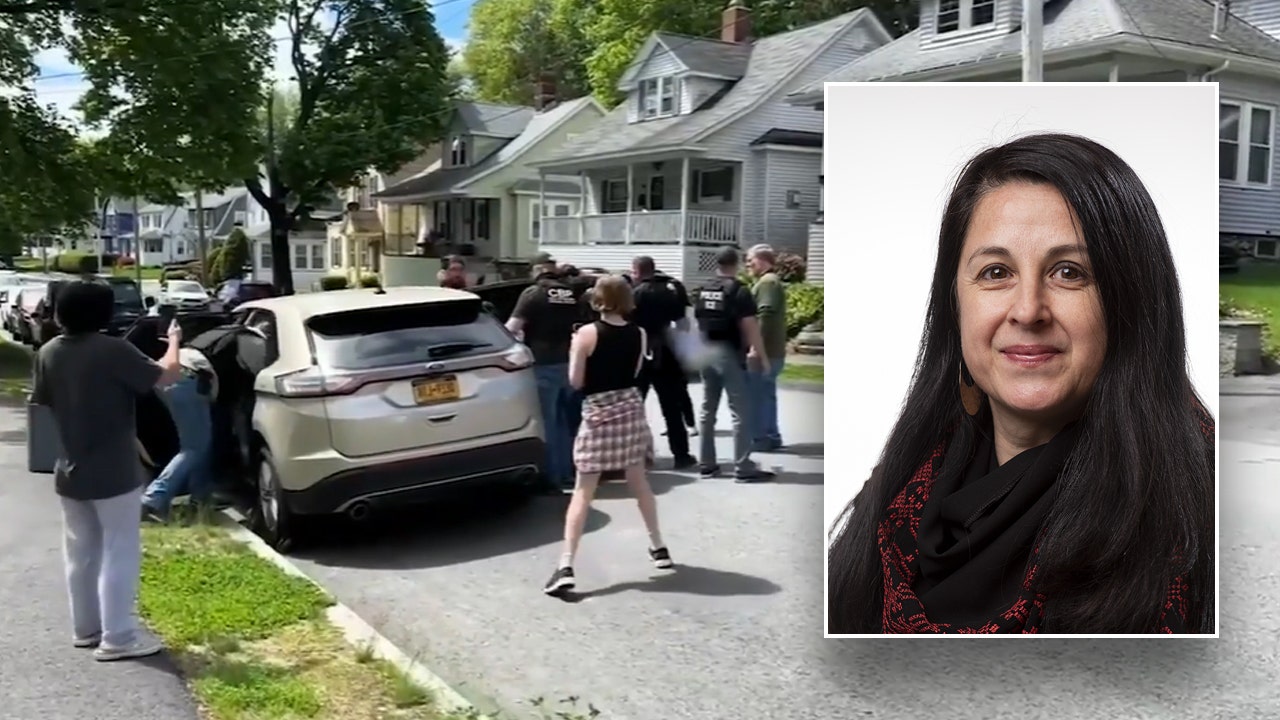
 Politics1 week ago
Politics1 week agoDHS says Massachusetts city council member 'incited chaos' as ICE arrested 'violent criminal alien'
-

 Education1 week ago
Education1 week agoA Professor’s Final Gift to Her Students: Her Life Savings
-
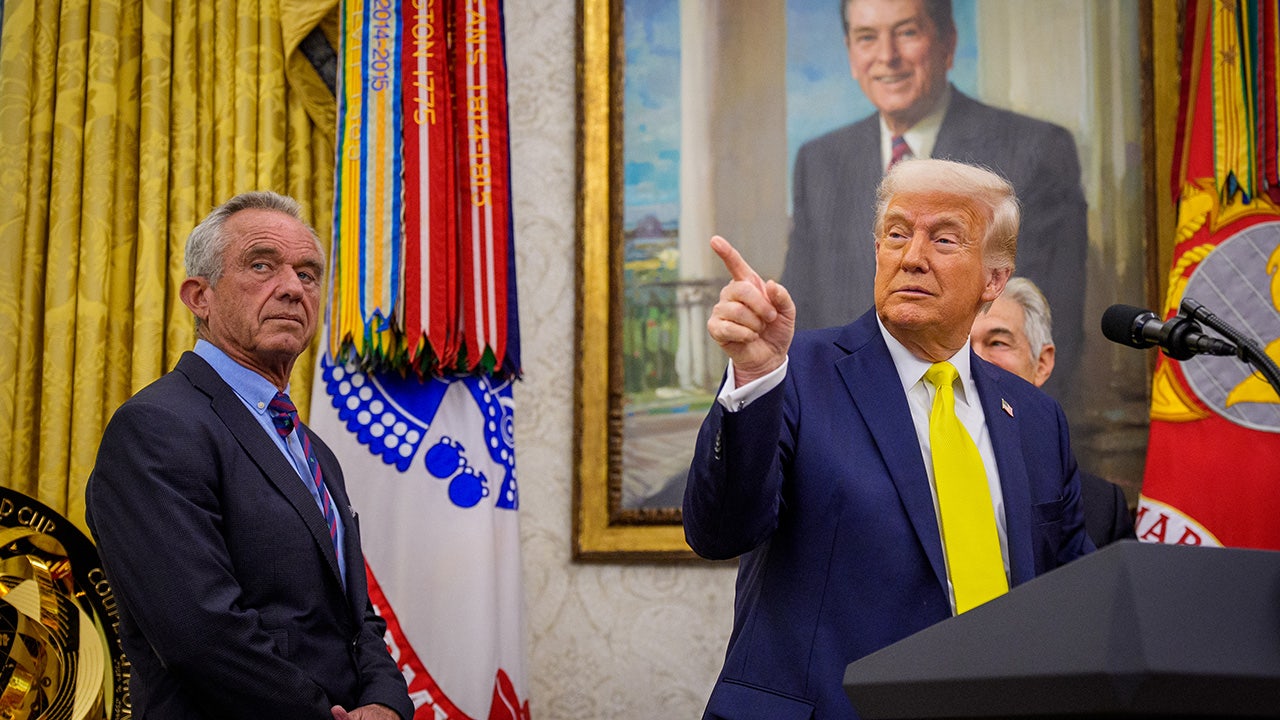
 Politics1 week ago
Politics1 week agoPresident Trump takes on 'Big Pharma' by signing executive order to lower drug prices
-

 Education1 week ago
Education1 week agoVideo: Tufts Student Speaks Publicly After Release From Immigration Detention
-

 News7 days ago
News7 days agoAs Harvard Battles Trump, Its President Will Take a 25% Pay Cut
-

 Culture1 week ago
Culture1 week agoTest Yourself on Memorable Lines From Popular Novels
-

 News1 week ago
News1 week agoWhy Trump Suddenly Declared Victory Over the Houthi Militia



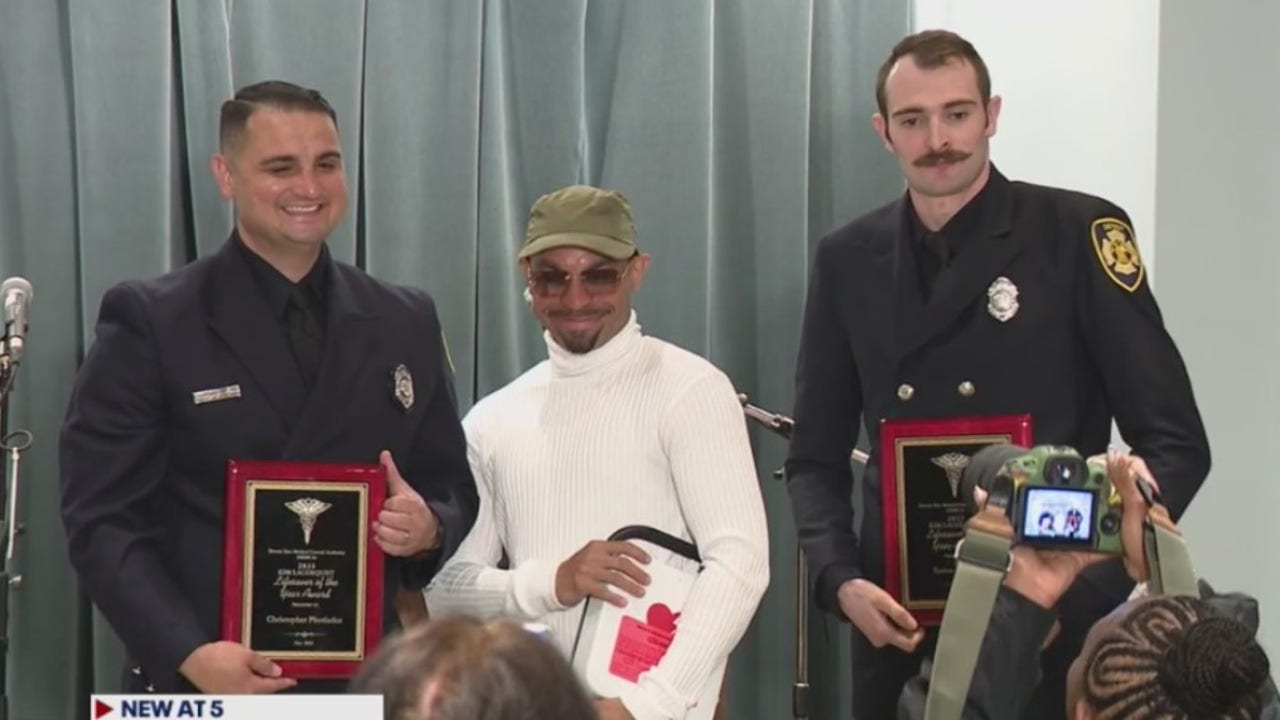
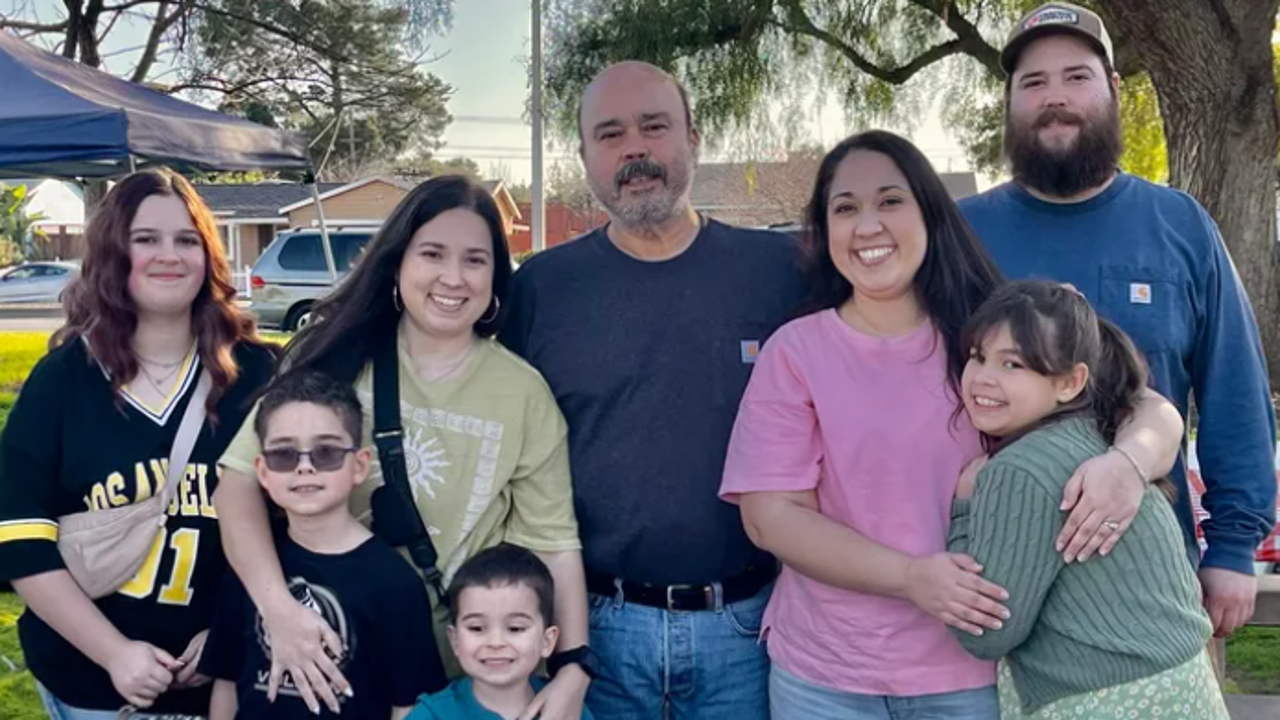




.jpg/wellness%20(1).jpg?VersionId=74z63282ohhuj13ZpM1baSYhD3O2ov.C)





